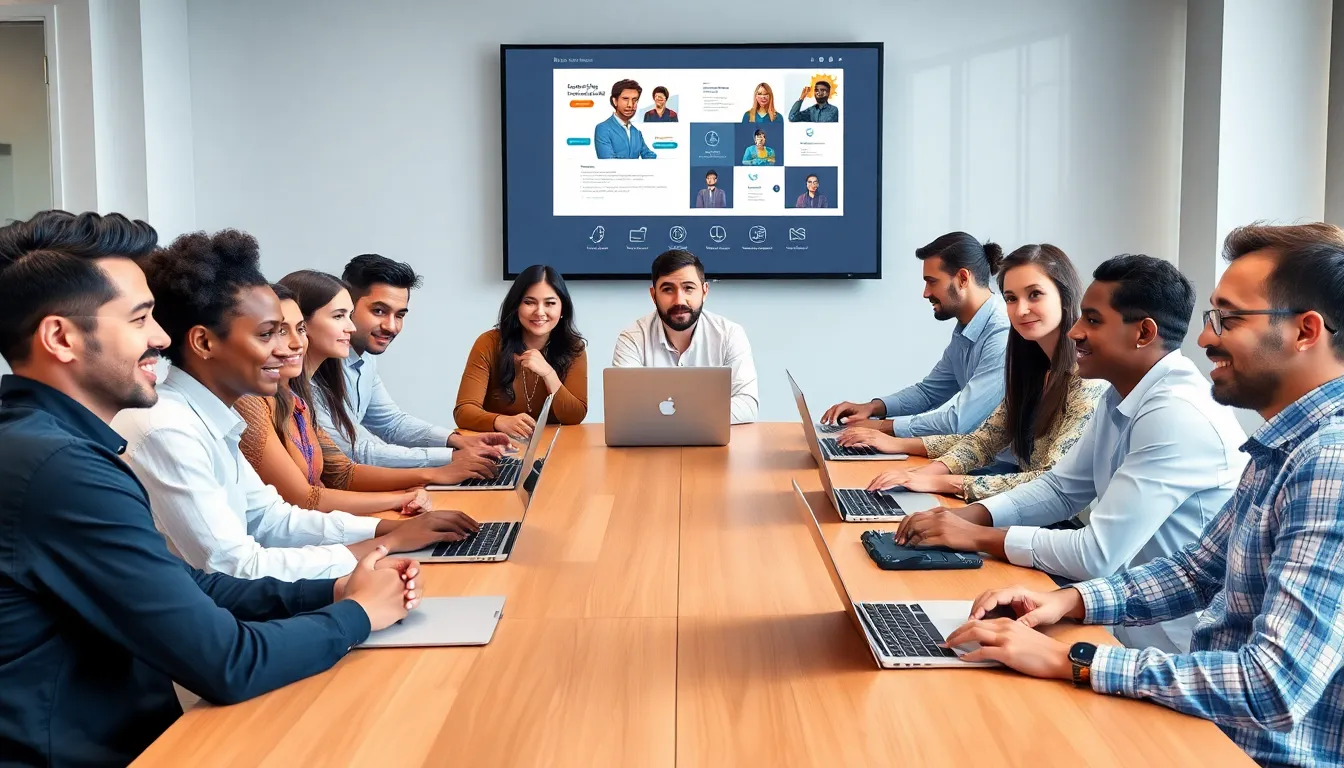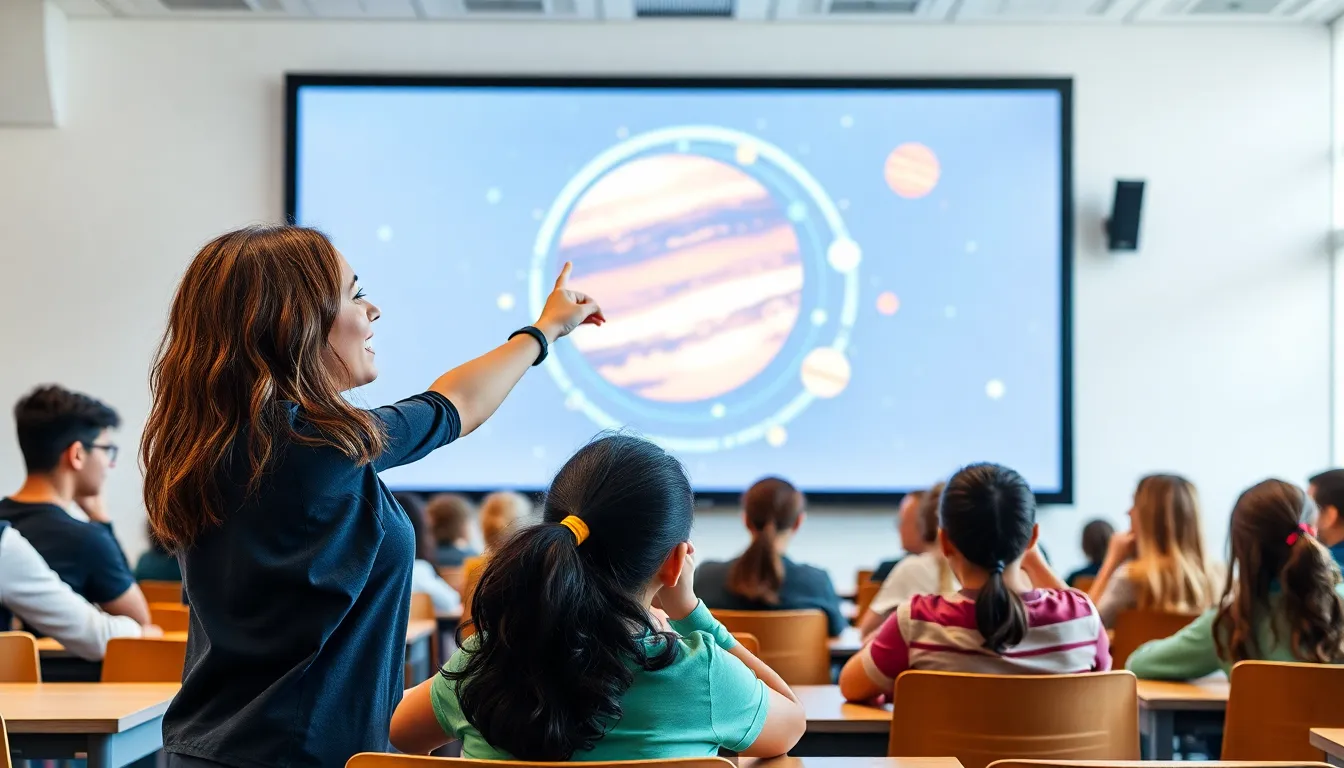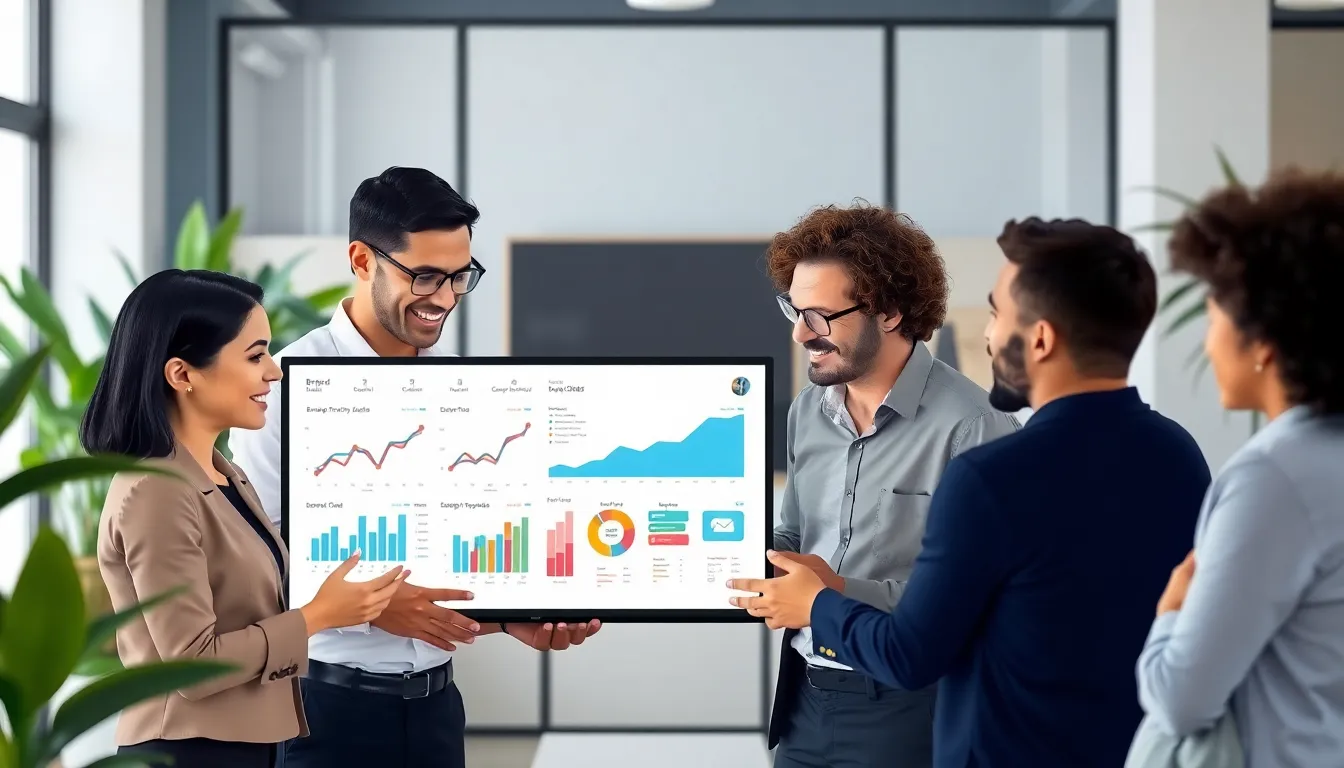In a world where scrolling through endless cat videos seems more appealing than reading a textbook, video learning has emerged as the superhero of education. It swoops in, armed with engaging visuals and captivating narratives, transforming dull lessons into exciting adventures. Who wouldn’t want to learn about the solar system from a quirky animated alien rather than a dry old textbook?
Table of Contents
ToggleBenefits of Video Learning
Video learning provides numerous advantages that enhance educational experiences. Engaging content and visual stimulation foster an enjoyable atmosphere for learners.
Enhanced Engagement
Learners become more involved with content through video. The combination of visuals, sounds, and narratives captures attention effectively. Interactive elements, such as quizzes and polls, encourage active participation. Students often report higher levels of motivation when faced with engaging videos compared to static materials. Research indicates that video formats can increase engagement rates by up to 80%.
Improved Retention
Retention improves significantly with video learning techniques. Visual stimuli help strengthen memory recall. Studies show that people remember 65% of information presented visually, versus only 10% through text alone. The ability to pause, rewind, or replay videos enables learners to absorb content at their own pace. This flexibility supports diverse learning styles and contributes to a deeper understanding of complex subjects, boosting overall knowledge retention.
Types of Video Learning

Video learning encompasses various formats, each offering unique advantages for educational experiences.
Live Videos
Live videos provide real-time interaction between instructors and learners. These sessions often take the form of webinars or live Q&A sessions, allowing participants to ask questions as the lesson unfolds. Immediate feedback plays a crucial role in enhancing understanding and engagement. According to studies, real-time interaction can boost retention rates by approximately 70%. Learners appreciate the sense of community that comes from engaging with peers and instructors in a live setting. Participants can also benefit from spontaneous discussions that may not occur in pre-recorded formats.
Recorded Tutorials
Recorded tutorials are pre-produced video lessons that learners can access at their convenience. These tutorials often cover specific skills or concepts, providing structured learning opportunities. Flexibility is a critical benefit here, as students can pause or replay sections to reinforce understanding. Research indicates that using recorded tutorials can improve learning efficiency by nearly 55% due to the ability to control playback speed. Many learners prefer these resources for self-paced learning, which accommodates diverse learning preferences. Furthermore, recorded tutorials often include demonstrations or visual aids that enhance comprehension of complex topics.
Best Practices for Effective Video Learning
Effective video learning encourages engagement and retention through specific strategies. Implementing best practices enhances the learning experience and maximizes knowledge acquisition.
Short and Concise Videos
Short videos promote better retention and focus. Studies show that videos lasting under five minutes increase completion rates significantly. Brevity ensures learners remain engaged without losing interest. Presenting one main idea per video allows clearer understanding and easier recall. This structure accommodates learners’ busy schedules, enabling access to bite-sized information. Content creators should prioritize clarity and conciseness to deliver impactful lessons swiftly.
Interactive Elements
Incorporating interactive elements enhances video learning effectiveness. Quizzes and polls actively engage learners, facilitating knowledge reinforcement. Research indicates that interactive content can elevate retention rates by up to 70%. Choosing to include prompts encourages viewers to reflect on what they’ve learned. Additionally, interactive components foster a sense of community among peers, enriching the educational experience. Engaging viewers in this manner transforms passive learning into an active process.
Challenges of Video Learning
Video learning presents several challenges that can hinder its effectiveness.
Technical Issues
Technical issues often disrupt the video learning experience. Poor internet connectivity can result in buffering or low-quality playback. Compatibility problems with devices may prevent access to content. Additionally, learners may struggle with software glitches that detract from engagement. Research indicates that technical difficulties can lead to a 60% drop in learner participation. To mitigate these issues, educators must consider platform usability and ensure content is accessible across various devices.
Accessibility Concerns
Accessibility concerns pose significant barriers for some learners. Videos that lack captions or transcripts limit access for individuals with hearing impairments. Furthermore, visually impaired learners may find it challenging to engage with content that does not include audio descriptions. Statistics reveal that around 20% of the population experiences some form of disability. Inclusivity should drive the development of learning materials, ensuring all students can benefit from video learning. Overall, addressing these concerns enhances the educational experience for everyone.
Video learning stands out as a transformative approach that enhances engagement and retention in education. Its ability to combine visuals and narratives captivates learners while catering to diverse learning styles. By leveraging interactive elements and offering flexibility, video content fosters a more personalized educational experience.
Despite challenges like technical issues and accessibility concerns, the advantages of video learning are undeniable. As educators and institutions continue to embrace this dynamic method, the potential for improved learning outcomes grows. Investing in effective video learning strategies not only enriches the educational landscape but also ensures that all learners can thrive in an increasingly digital world.



